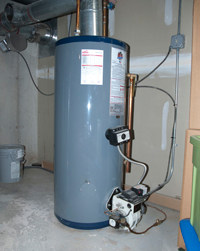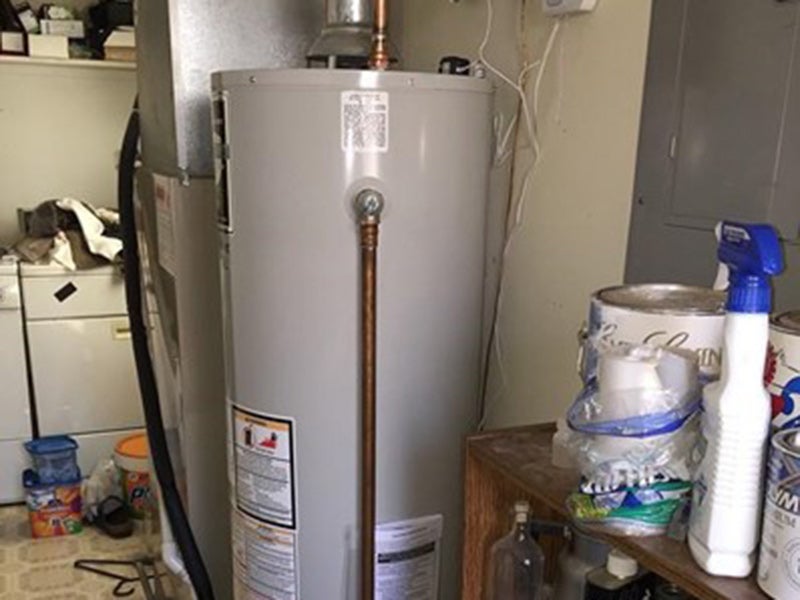How to Effectively Care for Your Home's Hot Water SystemBest Methods to Maintain Your Home's Hot Water System Successfully
How to Effectively Care for Your Home's Hot Water SystemBest Methods to Maintain Your Home's Hot Water System Successfully
Blog Article
We've noticed the article on Water Heater Maintenance Tips You Can't Afford to Forget down the page on the internet and decided it made sense to relate it with you over here.

Hot water is vital for daily comfort, whether it's for a rejuvenating shower or washing recipes. To ensure your warm water system runs effectively and lasts much longer, routine maintenance is crucial. This short article gives useful tips and understandings on how to preserve your home's hot water system to prevent disruptions and expensive repair services.
Intro
Maintaining your home's hot water system may seem overwhelming, yet with a few straightforward steps, you can ensure it runs smoothly for several years ahead. This guide covers every little thing from understanding your hot water system to DIY upkeep tips and understanding when to call professional assistance.
Importance of Maintaining Your Hot Water System
Normal maintenance not just expands the lifespan of your warm water system yet also guarantees it runs efficiently. Ignoring upkeep can lead to reduced effectiveness, greater energy expenses, and even early failing of the system.
Signs Your Hot Water System Demands Maintenance
Understanding when your hot water system needs focus can prevent significant problems. Watch out for indicators such as inconsistent water temperature, odd sounds from the heating system, or rusty water.
Comprehending Your Warm Water System
Prior to diving right into upkeep tasks, it's valuable to comprehend the standard elements of your warm water system. Usually, this includes the hot water heater itself, pipelines, anode poles, and temperature level controls.
Monthly Maintenance Tasks
Regular regular monthly checks can assist capture small concerns prior to they rise.
Purging the Water Heater
Flushing your hot water heater gets rid of sediment accumulation, enhancing effectiveness and lengthening its life.
Monitoring and Changing Anode Rods
Anode poles protect against deterioration inside the container. Evaluating and changing them when broken is critical.
Evaluating and Changing Temperature Setups
Readjusting the temperature level setups makes certain optimum efficiency and safety and security.
Do It Yourself Tips for Upkeep
You can do a number of maintenance tasks yourself to keep your hot water system in leading problem.
Looking for Leakages
Regularly inspect pipelines and links for leakages, as these can cause water damages and higher bills.
Testing Pressure Alleviation Valves
Examining the stress relief valve ensures it functions correctly and protects against excessive pressure accumulation.
Protecting Pipes
Shielding warm water pipelines decreases heat loss and can conserve power.
When to Call a Professional
While do it yourself upkeep is useful, some issues call for expert competence.
Complex Problems Requiring Expert Help
Instances include significant leaks, electrical troubles, or if your hot water heater is regularly underperforming.
Regular Specialist Maintenance Benefits
Specialist maintenance can include detailed evaluations, tune-ups, and guaranteeing compliance with safety criteria.
Final thought
Regular upkeep of your home's hot water system is essential for effectiveness, long life, and expense savings. By adhering to these suggestions and recognizing when to seek specialist help, you can make certain a reputable supply of hot water without unanticipated disturbances.
Water Heater Maintenance: The Basics
Maintaining your water heater will ensure it operates efficiently and has a longer lifespan. Neglecting regular maintenance can lead to costly repairs and an even bigger chunk of your savings if you have to replace it sooner than necessary. But there’s good news: Most water heater maintenance tasks are relatively simple and easy for homeowners with basic DIY skills.
Flush the Water Heater
Over time, sediment and minerals can build up in the tank, reducing its efficiency and potentially causing damage. To flush the tank, turn off the power or gas supply, attach a hose to the drain valve near the bottom and open the valve to drain the water until it runs clear. Ideally, flush the tank annually.
Replace the Anode Rod
The anode rod is a sacrificial metal rod that helps prevent corrosion inside the tank. Inspect and replace it every three to five years or per the manufacturer's recommendation. To replace the anode rod, turn off the power or gas supply, drain a few gallons of water from the tank, unscrew the old rod and replace it with a new one. If the anode rod is significantly corroded or covered in calcium buildup, it's a sign the water heater may need to be replaced soon.
Tune-Up
A yearly tune-up can help identify potential issues and ensure your water heater operates at peak efficiency. This typically involves checking the thermostat, burner assembly (for gas heaters) and any other components specified by the manufacturer. During a tune-up, the technician may also clean the burner and adjust the pilot light (for gas heaters) or examine the heating elements (for electric heaters).
How to Maintain Your Water Heater
Insulate the tank. Insulating the tank can improve energy efficiency and reduce heat loss, saving you money on energy bills. You can purchase precut insulation blankets designed specifically for water heaters or use standard fiberglass insulation wrapped securely around the tank. Check the temperature. The recommended water temperature for most households is around 120 degrees Fahrenheit (49 degrees Celsius). Higher temperatures can increase energy costs and potentially cause scalding. Use a kitchen thermometer to check the temperature at the faucet nearest the water heater. Monitor water pressure. Excessive water pressure can strain the water heater and cause leaks or even tank failure. Install a pressure-reducing valve if necessary. The ideal water pressure range is between 60 and 70 PSI (pounds per square inch). Test the temperature and pressure (T&P) relief valve. The T&P relief valve is a safety feature that releases pressure if the tank gets too hot or the pressure builds up too high. Test it annually by lifting the lever and allowing a small amount of water to release. Replace the valve if it doesn't release water or reseal properly. Check for leaks. Regularly inspect the tank, pipes and fittings for leaks or corrosion. Deal with issues promptly to prevent further damage. Even a small leak can lead to significant water damage over time. Consider a tankless water heater. If your traditional tank-style water heater is nearing the end of its lifespan ( typically 10 years), consider replacing it with a tankless water heater. These units heat water on demand, reducing standby energy losses and potentially saving you money on your energy bills. Schedule professional maintenance. While homeowners can perform many water heater maintenance tasks, it's still a good idea to schedule professional maintenance every few years. A plumber or HVAC technician can thoroughly inspect the unit, identify potential issues and ensure it operates safely and efficiently. https://www.homeserve.com/en-us/blog/home-improvement/hot-water-heater-maintanence/

We had been shown that article on Tips For Maintaining Your Hot Water Heater from a pal on another web blog. Appreciated our blog? Please share it. Help other people check it out. I praise you for being here. Kindly come visit our blog back soon.
Book 24/7 Report this page